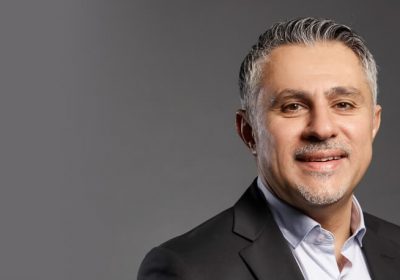
- Author: Nicole Madigan
- Posted: July 18, 2023
Aligning Forces: The Symbiotic Relationship between CFO & CIO
In an age where technology reigns supreme, and financial decisions remain critical to an organisation’s survival and indeed, success, the relationship between the Chief Finance Officer and Chief Information Officer has become one of the most critical. Digital transformation, data-driven strategies, and cyber security are top priorities for most organisations, making the alignment between these two roles increasingly important.
CFO Magazine’s Nicole Madigan examines, in part one of a two-part series, how the two C-Suite leaders navigate this symbiotic relationship, starting with SEEK’s Lisa Tobin.
No man is an island. These words, spoken by seventeenth-century author, John Donne, are often quoted by SEEK CIO, Lisa Tobin, to drive home the organisation’s core belief that collaboration is critical to success.
“One of the things that I love about SEEK is there is this understanding that together we are so much stronger,” explains Ms Tobin.
Ms Tobin describes organisational collaboration as a series of genuine relationships, with qualities similar to those we might experience in our personal lives – and there’s perhaps none more important than that between the CIO and the CFO.
“Both departments rely heavily on accurate and timely data to make intelligent decisions. They need to communicate effectively and be on the same page when it comes to data governance, ensuring data integrity, and using data insights to drive financial performance.”
Ms Tobin believes open and transparent communication channels are vital to ensure the technology and finance departments are aligned. It’s one of the reasons Seek recently implemented the Workday software platform across the enterprise – to promote transparency, improve data accuracy and streamline communication between the two departments.
Interestingly, the implementation itself served as a case in point where the two C-Suite executives were forced to work together harmoniously to ensure a smooth transition.
“Workday was successfully implemented through the collaboration of our finance, people, culture, and technology teams,” says Ms Tobin.
“One of the keys to our success whilst working on the Workday platform integration, was the joint understanding across the business of what people needed to do to get their day-to-day jobs done, how the processes support them, and what data was needed to move across the organisation – that’s the core magic because it sets them up for the future.”
Striking a balance between strategic objectives and financial constraints
At SEEK, the technology strategy has been specifically designed to enable and support the strategic objectives for the organisation, says Ms Tobin.
“In this way, we decide as an executive team what direction we want to take the business and consider how the strategies of our teams – including Technology, Finance and People and Culture – can enable that shift. Workday is one example of how this alignment across these streams has enabled growth and collaboration to a degree that has not been possible before.
“We made sure that we had a joint view on the impacts of our platform decisions for the longer term, so that makes decisions on scope, budget and experience so much more aligned.”
But harmony between the two roles isn’t always easy. Conflict between the CIO and CFO often stems from differences in priorities, perspectives, and communication gaps – similar to those faced by many partnerships.
“CFOs need to collaborate with their CIOs to establish robust data governance practices, ensuring financial data accuracy, integrity, and security. This involves defining data standards, implementing quality controls, and establishing data access and storage protocols.
Lisa Tobin, CIO | SEEK
“The CIO and CFO may also have conflicting views on affordability and payback around the allocation of resources and investments for change – what technology is preferred, what partners might be preferable, what actual technology initiatives add value,” Ms Tobin shares.
“Traditionally the CIO focuses on enabling innovation and driving change, while the CFO prioritises financial stability and cost control. They are both critical and the right balance for any organisation is always subject to internal and external factors – it changes over time.”
To address this, Ms Tobin says both the CIO and CFO must commit to engaging in open and transparent communication.
“This includes having regular discussions to align priorities, ensuring you understand each other’s perspectives and finding a balanced approach that considers both innovation and financial considerations.”
Misalignment in measuring and demonstrating the value of IT investments can also lead to conflicts. To ensure this doesn’t happen, Ms Tobin believes it’s crucial to establish clear metrics and success criteria at the outset of projects.
“At SEEK, we run a strong budgeting process to ensure we are operating within the constraints set by the finance team, but also have the flexibility to invest for the long term. Our technology investments have always been about ensuring the sustainability and scale of our business into the future, not about short-term results.
Important conversations between the CFO and the CIO
According to Ms Tobin, one of the most important conversations between a CFO and CIO is the ongoing discussion about the organisation’s cybersecurity strategy.
“This includes assessing cybersecurity defences, identifying potential vulnerabilities, and implementing measures to protect sensitive data and critical systems,” she says.
“CFOs must understand the organisation’s cybersecurity risks and work closely with the CIO to ensure appropriate measures are in place to mitigate those risks.”
Another critical conversation, says Ms Tobin, is data management.
“CFOs need to collaborate with their CIOs to establish robust data governance practices, ensuring financial data accuracy, integrity, and security. This involves defining data standards, implementing quality controls, and establishing data access and storage protocols.
“By working together, CFOs and CIOs can ensure that the organisation has a solid foundation for making data-driven decisions and complying with data privacy regulations.”
Incident response and business continuity plans are an important part of this discussion, as cybersecurity incidents can have significant financial implications.
“It is essential to have a coordinated approach to minimise any potential breaches’ impact.”
Finally, given the rapidly evolving digital landscape, the CFO and CIO must converse around emerging technologies and innovation.
“CFOs need to understand the potential impact of emerging technologies on finance operations, such as cloud computing, artificial intelligence, and blockchain. By collaborating with their CIOs, CFOs can identify opportunities to leverage these technologies to drive operational efficiencies, enhance data analytics capabilities, and improve overall business performance.”
Data – the “new gold” or a liability?
Data is an extremely valuable asset to any organisation but can present liabilities and risks.
“Organisations must be mindful of the potential consequences if data falls into the wrong hands, whether through a data breach or insider threat. These risks can include reputational damage, financial loss, legal implications, and loss of customer trust.”
Ms Tobin believes organisations need to adopt a comprehensive data protection strategy to mitigate these risks.
“This strategy should include robust security measures, such as passwordless authentication, encryption, access controls, and monitoring systems, to safeguard sensitive data.
“Additionally, implementing strong data governance practices, including data classification, minimum data retention, lifecycle management, and regular audits, can help organisations identify and address potential vulnerabilities.”
Like most roles across any organisation, technology has made a substantial change to the way the roles are delivered and the impact and scale they can have – and that includes the CFO.
“So, technology itself is the biggest change, our visibility of information, our ability to manipulate information, the impact of automation on so many roles,” Ms Tobin says.
“This has led to a great outcome in my view – the much closer relationship between the CFO and CIO as they steer the capability and effectiveness an organisation can bring to bear on their competitive proposition in the market.”








